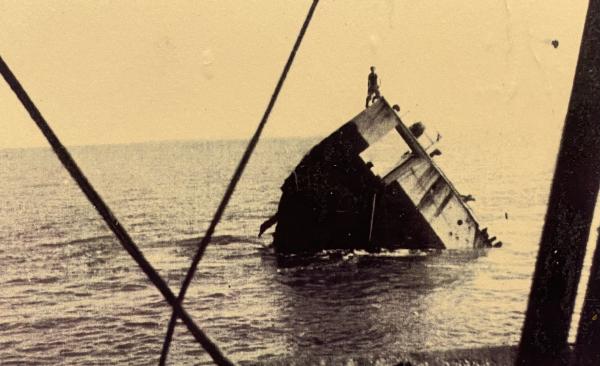
By Raquel Mustillo
IT was early 1951 when Limestone Coast resident Geoff Aslin saw the 100m-long, 3346 tonne freighter Corio shipwrecked roughly 4km from Cape Banks.
“I was about six years old at the time and my Dad had an emergency radio and he received a call about the wreck,” Mr Aslin said.
“I remember my parents driving me out to see it.
“There were no roads, just tracks and I can remember having to get out of the car and climb over the dunes.
“When I saw it I couldn’t believe how big it was.”
On February 26, 1951 – 70 years ago today – the steel cargo ship was lost after running aground on Admella Reef when en route from the Fleurieu Peninsula to Wollongong with a cargo of limestone.
Built by the NSW Government Dockyard in 1919, the steel ship was owned by Huddart, Parker and Co at the time of the loss.
The Corio was wrecked on a rock in about 18 feet water, just 100 yards from where the historic Admella sank in 1859.
“It was really foggy that day, you wouldn’t have been able to see very far ahead of you, especially out on the water,” Mr Aslin said.
“The captain thought he was right out to sea so when he came in, he came in between where the Admella was wrecked and the coast.
“It hit the reef and ended up not too far off from where the Admella sank.”
Although the vessel was just little more than a quarter of a mile offshore, nothing could be done to save the Corio.
According to a report in The Border Watch, the 43 crew members were advised to abandon ship by fisher Fred Von Stanke, but they were “having tea and were not concerned about their dangerous position.”
At 9pm, Captain Rasmussen radioed that the ship was taking water and the sea around the Corio was a milky colour caused by some of the limestone.
Shortly after, 18 men were taken off the ship by the Iron Yampi, a BHP ore freighter which turned and steamed for six hours to the Corio’s aid after having picked up the SOS signal.
Images from the wreck photographed by Ms Aslin’s mother, vessel parts and the Corio’s ship log are among the salvaged artefacts that feature in the Port MacDonnell and District Maritime Museum.
Committee members and volunteers are currently working to complete the museum’s next display, a wall mural and a three dimensional jetty made from materials from the original structure.
Co-located within the Port MacDonnell Community Complex, the museum is divided into two sections detailing the region’s rich maritime history and land life at the turn of the century.
Port MacDonnell and District Maritime committee president Trevor Sheard said further additions to the museum are planned for 2020, including a display early settlement in Port MacDonnell following the town’s official designation as a port on April 4, 1860.
Mr Sheard said an audio-visual display of the local shorebirds and the 14,000km migratory flights to the Arctic Circle back to the Limestone Coast and an exhibit celebrating the rock lobster fishing industry was also scheduled for completion this year.
“We recently finished a school exhibit which shows you what a classroom used to look like,” he said.
“The students at Allendale East Area School were involved and wrote their thoughts about what they thought school was like back in these days and we have put those letters on display.
“There are a lot of people come through who may have been to the museum years ago and when they come back they comment on the next exhibits.
“We like to change the displays to keep it interesting and help tell some of the stories of the region.”








